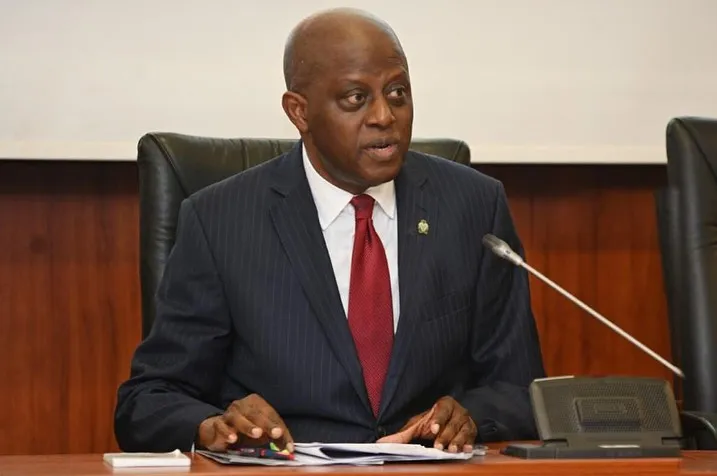Nigeria spent $2.86 billion servicing external debt in the first eight months of 2025, accounting for 69.1% of the country’s total foreign payments of $4.14 billion during the period, according to international payment data released by the Central Bank of Nigeria (CBN) on Wednesday.
This represents a $198 million drop from the same period in 2024, when external debt service totalled $3.06 billion, 70.7% of the $4.33 billion in total foreign payments. While the nominal debt service amount declined year-on-year, its share of overall foreign outflows remains persistently high, with nearly seven out of every ten dollars spent on debt obligations.
The CBN data reveals significant month-to-month fluctuations in Nigeria’s debt servicing payments in 2025. In January, $540.67 million was spent on debt service, down 3.5% from $560.52 million in January 2024. February recorded $276.73 million, slightly lower than the $283.22 million spent in the same month last year. In March, however, payments surged to $632.36 million, marking a 129% increase from the $276.17 million recorded in March 2024. April followed with $557.79 million, a 159% rise over the $215.20 million from the previous year.
In May 2025, debt service dropped sharply to $230.92 million, compared to $854.37 million in May 2024, a decline of 73%. June saw a rise to $143.39 million, up 182% from $50.82 million in the same month of the previous year. July recorded $179.95 million, representing a 66.8% decrease from the $542.50 million spent in July 2024. By August 2025, payments climbed again to $302.30 million, 8% higher than the $279.95 million in August 2024. These fluctuations underscore the irregular nature of Nigeria’s external debt repayment schedule.
Month-on-month trends in 2025 show further volatility. February’s $276.73 million marked a 48.8% drop from January. March spiked by 128.5% to $632.36 million. April declined by 11.8% to $557.79 million, followed by a steep 58.6% drop in May. June continued the downward trend, falling 37.9% to $143.39 million. July saw a modest rebound to $179.95 million, an increase of 25.5%, before August jumped again by 67.9% to $302.30 million. This erratic pattern reflects the unpredictability of Nigeria’s external obligations and their impact on foreign reserves and liquidity planning.
Despite the slight year-on-year decline in total debt payments, the high proportion of external debt service in Nigeria’s foreign transactions remains a concern. In both 2024 and 2025, around 70% of foreign currency outflows were allocated to debt servicing, leaving limited fiscal room for critical imports, infrastructure, or development-related spending.
In a recent assessment, Fitch Ratings projected that Nigeria’s external debt service would rise from $4.7 billion in 2024 to $5.2 billion in 2025. This includes $4.5 billion in amortisation and a $1.1 billion Eurobond repayment due in November 2025. The agency forecasts a drop to $3.5 billion in 2026. Fitch also flagged a minor delay in the payment of a Eurobond coupon due on March 28, 2025, as a reflection of ongoing challenges in public financial management.
While Nigeria’s external debt service remains moderate by global standards, Fitch cited high interest costs, weak revenue mobilisation, and limited fiscal space as persistent risks. The agency expects general government debt to hover around 51% of GDP in both 2025 and 2026. However, the country’s revenue-to-GDP ratio remains structurally low — projected to average 13.3% — resulting in a high interest-to-revenue ratio exceeding 30% for the general government. For the Federal Government specifically, the interest burden is even more severe, with nearly 50% of its revenue expected to go toward interest payments alone.
Nigeria’s reduced debt servicing bill in 2025 offers little relief, as debt remains the dominant use of foreign exchange. The volatile repayment schedule, rising debt projections, and weak revenue base point to ongoing vulnerabilities in the country’s external position and fiscal health.


